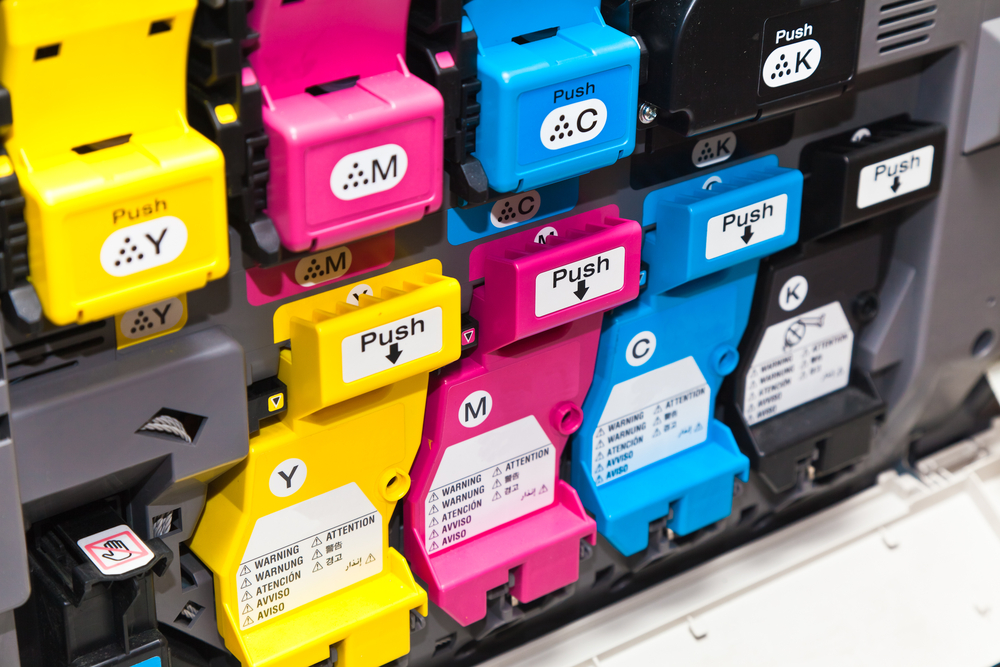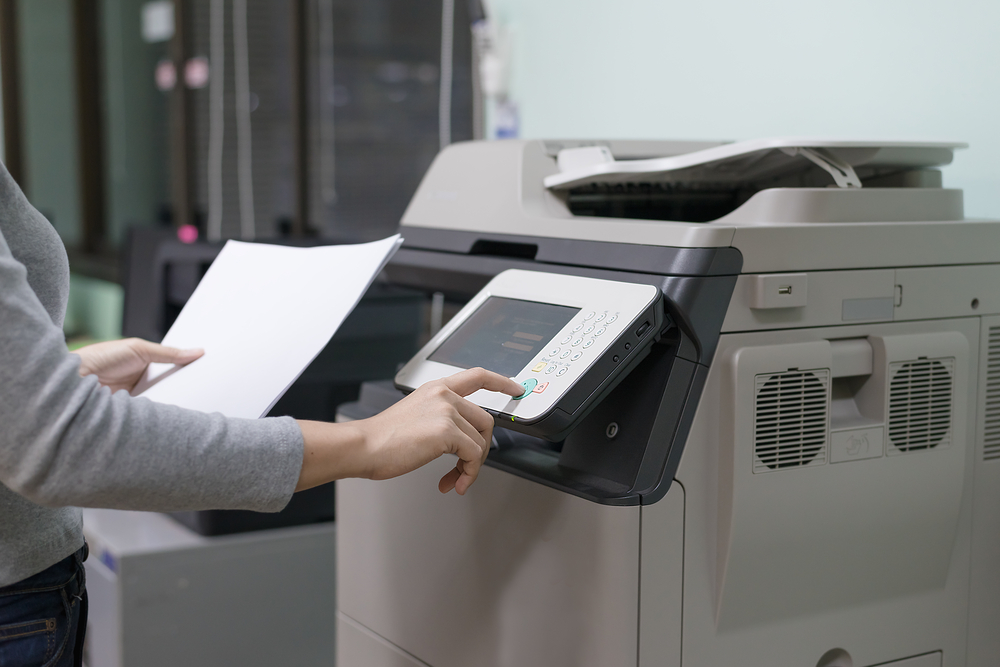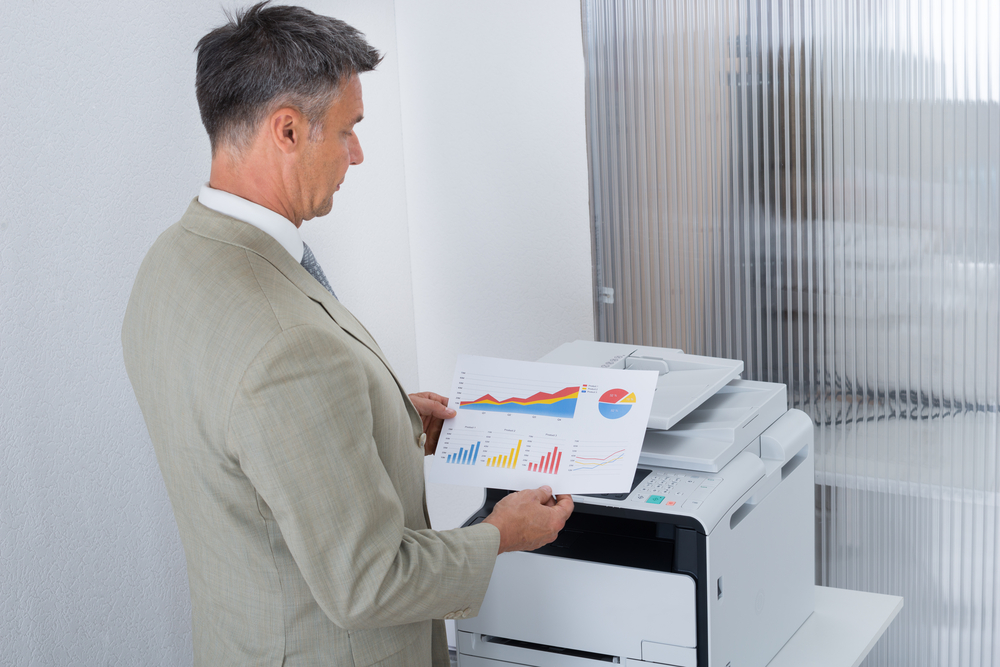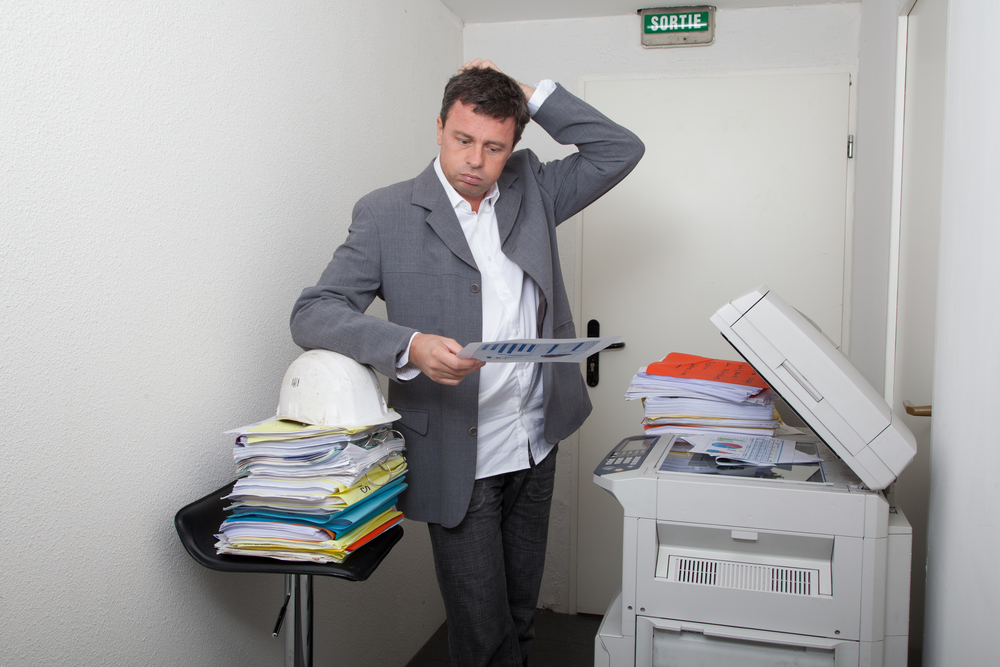The primary distinction between an inkjet and a laser printer lies in their operational methods. In an inkjet printer, ink droplets are propelled directly onto the empty page, while a laser printer employs a laser beam to fuse toner powder onto the printer paper. These two printer types vary in terms of cost, printing speed, and image quality. Furthermore, several factors substantially influence the long-term cost of operating these printers. To determine which one suits your needs best, delve deeper into the characteristics and applications specific to each printer type.

Inkjet vs Laser Printers
Laser printers and inkjet printers employ distinct techniques when it comes to imprinting text and images onto a blank page. These disparities in their methods translate into contrasting outcomes and provide distinct advantages.
What is an Inkjet Printer?
An inkjet printer employs a compact nozzle to eject minuscule ink droplets onto the printing surface. This technology predates the introduction of laser printers and is known for its simplicity. Inkjet printers are typically more affordable and compact in size compared to their laser counterparts. Furthermore, the ink cartridges for inkjet printers are generally less expensive than the toner cartridges used in laser printers.
Inkjet printers utilise two ink variants: pigment-based ink and dye-based ink. The pigment-based ink is renowned for its superior quality but comes at a higher cost. In contrast, dye-based ink requires more time to dry and set, which may increase the risk of smudging. Given that the ink is applied while wet in both cases, certain types of less-absorbent paper can be susceptible to smearing when used with inkjet printers.

Using genuine ink offers a distinct advantage when it comes to generating top-tier colour images. An inkjet printer, in particular, excels in enhancing the visual appeal of photographs, owing to its vibrant ink hues and the printer’s finesse in seamlessly blending colours. For those who anticipate frequent photo printing, the ideal choice might be an inkjet printer specifically designed for photographic applications. These specialised printers exhibit a remarkable capacity to yield highly detailed images with deep, rich blacks and a wide tonal spectrum. The pigment-based ink they employ resists fading and adheres exceptionally well to both glossy photo paper and textured stationery. These qualities render photo inkjet printers invaluable for small businesses engaged in producing marketing materials.
Additionally, inkjet printers boast a swifter warm-up period, making them well-suited for quickly producing occasional documents. Moreover, their ink cartridges can be conveniently refilled or recycled, thus promoting environmental sustainability and cost savings. In terms of maintenance, they are more compact and simpler to manage compared to their laser printer counterparts.
Nevertheless, it’s essential to acknowledge certain drawbacks associated with inkjet printers. Although the ink cartridges are relatively economical, the ink itself can be pricier. Furthermore, inkjet printers tend to consume more ink, especially during self-cleaning routines, contributing to a higher total cost of ownership. Their printing speed is not optimised for high-volume output, which can pose a challenge for those with extensive printing needs. Additionally, if the printer remains unused for prolonged periods, the ink may dry up, necessitating periodic usage to prevent this issue.
What is a Laser Printer?
A laser printer operates by bonding dry toner powder to your printer paper. Its internal mechanisms involve intricate components such as a laser, mirror, and photosensitive drum, among other technical elements. However, for a basic understanding of the laser printing process, it’s essential to know that it delivers sharp, precise text and lines and performs reasonably well with mid-grade colour images.

While laser printers come with a higher initial cost for both the printer itself and its toner cartridges, don’t be discouraged. The advanced engineering of laser printers results in reduced waste and lower cost per printed page, making them a cost-effective choice for most businesses in the long run.
Laser printers are typically the preferred option for small businesses, educational institutions, and law firms due to their rapid printing capabilities. This speed advantage is especially beneficial for law firms dealing with extensive legal documents and educators reproducing entire textbooks. Small businesses primarily producing text documents with occasional graphics at high volumes will also appreciate the increased efficiency of laser printers, which excel in printing small fonts and fine lines.
However, laser printers require somewhat more maintenance. This isn’t usually an issue for offices that lease their printers or who get a managed print service. Additionally, laser printers have a longer warm-up time and take up more space in the office.
Now, when it comes to choosing between LaserJet and inkjet printers, it’s essential to note that LaserJet is the original laser printer model introduced in the 1980s by Hewlett-Packard. While modern HP LaserJets are still available today and carry the trust associated with a household name like HP, most benefits attributed to LaserJet’s are similar to those offered by other laser printer options from our reliable technology partners.
7 Factors to Consider When Choosing Your Printer
When selecting a printer, your specific requirements will dictate your top priorities, which can vary depending on your organisation and intended use. There are situations where an inkjet printer may be the more suitable option, while in other instances, a laser printer may offer the ideal features for your particular applications. To make an informed decision, it’s essential to take into account the following seven key factors, which will help you streamline your choices.

1. Initial Investment
For many small businesses, the initial financial commitment plays a pivotal role in the decision-making process when adopting new technology. Within both the inkjet and laser printer categories, you’ll encounter options at various price points. However, in the broad spectrum of inkjet versus laser printers, inkjet printers tend to be more budget-friendly.
Navigating printer pricing can be perplexing because you can easily find basic laser and inkjet printers offered at approximately the same cost. The distinction, however, lies in the fact that a basic inkjet printer can produce both black and white and colour prints, while a similarly priced basic laser printer will likely be limited to grayscale printing.
It’s essential to approach your printer investment differently than other IT acquisitions. While products like desktop computers and monitors constitute one-time expenses, printers operate under a different financial model. The true expense stems from the recurring purchase of ink. If your budget permits, it might be more advantageous to opt for a higher initial investment in a printer that is more efficient with ink consumption.
2. Ongoing Expenditures
Continuously maintaining printers involves expenses related to upkeep, replacement components, and the acquisition of ink or toner. Additionally, it’s important to account for the need to replenish your paper supplies, even though this cost is typically not included in the initial printer price.
The standard method for quantifying ongoing expenses is to determine a printer’s cost per page. This metric is derived by dividing the cartridge cost by its page yield, which denotes the number of pages that can be printed with a single cartridge. While inkjet cartridges are generally more affordable, they typically offer a lower page yield, resulting in higher costs per page. Conversely, laser printer cartridges tend to be pricier but come with a higher page yield, ultimately leading to long-term savings.
Another crucial aspect to consider in ongoing costs is the amount of ink wastage. Inkjet printers require regular maintenance and cleaning procedures, which sometimes consume a significant amount of ink, on par with regular printing tasks. The level of ink wastage can vary substantially depending on the printer’s brand and model.
One comparative analysis revealed that an efficient inkjet model had an annual ink wastage cost of approximately £3.40 for maintenance cycles, while another model incurred a hefty £158 in such expenses. Interestingly, the initial purchase price of both printers was nearly identical. Another alternative is to eliminate wasted ink by choosing a laser printer, as laser printers do not employ toner for cleaning cycles, thus eliminating this particular cost.
Regrettably, a striking 64% of small and medium-sized businesses are unable to monitor their ongoing printer costs and usage effectively. Given that these costs represent a significant portion of a company’s overall IT budget, understanding and optimising recurring ink expenses are paramount. Print management services are designed to assist businesses like yours in comprehending their printer and ink consumption patterns and, in turn, streamline these ongoing expenditures.

3. Choosing Between Colour and Grayscale
Another approach that businesses employ to cut costs involves opting for black-and-white printing. Both inkjet and laser printers are available in monochrome versions, typically at a more budget-friendly price point. There are advantages and disadvantages to both colour and grayscale printing. For instance, producing flyers and brochures in black and white may curtail their impact. However, it’s worth noting that using colour ink doesn’t have to be excessively expensive. The right printer supplier could potentially reduce your company’s colour ink expenses.
When faced with the decision between inkjet and laser printers, it’s valuable to consider whether your printing needs will frequently involve colour or primarily entail black-and-white documents. If your requirements lean toward colour printing, an inkjet printer represents the superior choice. Conversely, for black-and-white documents, you might find that laser printers, known for their sharp text and efficient black toner usage, are the more suitable option.
4. Printing Quality for Images and Text
Both inkjet and laser printers excel in their output quality, but each has distinct advantages. Inkjet printers shine in the realm of graphics and imagery, particularly when it comes to photo inkjet printers, which can deliver photographs with professional-grade precision. Conversely, laser printers take the lead when it comes to text, ensuring the production of sharp and crisp lines. It’s worth noting that text printed on certain types of paper with an inkjet printer can sometimes appear less sharp and clear.
For businesses seeking to produce hard copies of visually appealing branded presentations or flyers, an inkjet printer might be the preferable choice. On the other hand, enterprises dealing with the printing and perusal of extensive text documents may find laser printers more suitable. Additionally, if your goal is to conserve paper by printing with smaller font sizes, a laser printer is the optimal choice.
5. Printing Speed and Output Capacity
Efficiency is paramount for businesses that regularly produce printed materials. Waiting for a sizable batch of documents to emerge from the printer wastes valuable time. This seemingly innocuous wait can accumulate significantly over time. In the United States, in offices with shared central printers, the average employee spends around three minutes waiting for each document. Although it might not appear substantial, this adds up to 13 hours per year per employee.

Laser printers are well-suited for rapid, high-volume document printing. While there may be a slightly longer warm-up period, once the first document is printed, subsequent ones follow in quick succession. When dealing with substantial document volumes, laser printers prove invaluable in time-saving. On the other hand, inkjet printers tend to be somewhat slower due to the ink needing time to dry and prevent smudging. When printing smaller batches on an occasional basis, inkjet printers can be advantageous since they require minimal warm-up time.
Another important consideration is the printer’s volume handling capacity. Overloading a printer with excessive printing within a short time can lead to wear and tear. Most printers provide information on their maximum monthly duty cycle and recommended monthly duty cycle to help users gauge their print volume capabilities. The maximum figure represents the printer’s threshold without risking damage, while the recommended number indicates the volume for maintaining optimal performance. Generally, laser printers boast significantly higher monthly duty cycles compared to inkjets.
6. Footprint Size Consideration
Whether you find yourself in possession of an entire floor for your workspace or are confined to a modest shared office area, the physical dimensions of your printer play a crucial role in your decision-making process. After all, if the only available space for your printer is a cramped supply closet, compactness becomes a vital factor.
In general, commercial printers tend to be more substantial in size compared to home office printers. However, this additional bulk offers advantages, as multifunction printers are capable of accommodating more paper, performing stapling tasks, and making copies. When comparing the size of laser printers to inkjet models, it’s evident that inkjets are generally more compact. Although there are compact laser printers on the market, they tend to be bulkier and heavier in comparison to their inkjet counterparts.
7. Business Printer Features
When evaluating printers, it’s essential to consider more than just their ability to produce high-quality graphics and text. Your printer should seamlessly integrate with your office’s existing workflows. Larger paper trays may be necessary for high-volume printing and copying tasks, while a high-capacity printer cartridge can save you from frequent ink or toner restocking trips. Laser printers, rooted in business applications, often incorporate these enhanced features to enhance your company’s efficiency.
Another critical aspect to contemplate is the printer’s cybersecurity features. These devices handle sensitive documents regularly and connect to various computers within your company’s network, making them attractive targets for cyberattacks. It’s alarming to note that 60% of businesses have experienced data loss due to printer security breaches.
Laser printers are more likely to offer the advanced security features required to safeguard your business. Some commercial inkjets from reputable vendors also include these security features. Additionally, you may consider centralising your IT services with your printer vendor.
Which printer is right for you?
So, when it comes to choosing between a laser or inkjet printer, the next crucial step is determining which one aligns best with your business needs. As you navigate this decision, consider posing three fundamental questions to yourself.

1. What should I print?
Are your typical print requirements centred around text or images?
The answer to this question often hinges on the nature of your organisation. For instance, a small retail business may opt for inkjet printing to produce vibrant graphics for their seasonal sales promotions. Nonprofit organisations and places of worship might find it necessary to create eye-catching, full-colour flyers and brochures to publicise upcoming fundraisers and events. In contrast, a law firm would lean towards laser printing for contracts, transcripts, and other text-heavy documents demanding precision and legibility. Educational institutions, such as schools, may have a diverse range of printing needs, encompassing text-based quizzes, educational materials, and colourful posters designed for student clubs or teacher bulletin boards.
It’s also worth noting that various departments within your organisation could have distinct printing requirements. For example, the marketing department may require an inkjet printer for high-quality, full-colour image printing, while the human resources and accounting departments may find black-and-white laser printers more suitable for producing sharp and easily readable text documents.
2. How frequently should I use my printer?
For numerous small businesses, monitoring printer usage can be a daunting task. A practical approach is to gauge your printing frequency based on your ongoing printer paper and ink cartridge restocking routine. These procurement records can provide an approximation of the number of pages you print each month. Is it nearer to 500 or 3,000 pages? Inkjet printers are better suited for lower volumes and infrequent printing, whereas laser printers excel at high-volume and frequent printing tasks.
3. Determining your printing budget
Each organisation grapples with its unique budgetary considerations. In some companies, the allocation for equipment stands distinct from office essentials such as paper and ink, while others consolidate these expenses for a comprehensive perspective during decision-making. Certain entities may find constraints within their IT budget that hinder the adoption of a laser printer, despite its potential long-term cost savings. Meanwhile, organisations working with limited office supply budgets may find it challenging to justify the relatively higher per-page costs associated with inkjet printers.

Is a Laser Printer More Cost-Effective than an Inkjet Printer?
Generally, inkjet printers offer a lower initial cost but tend to incur higher long-term expenses. In contrast, laser printers command a higher upfront investment that ultimately balances out over time due to their lower cost per page. Moreover, laser printers often exhibit a longer lifespan, allowing you to extend the value of your initial outlay. To make an informed decision, it’s advisable to scrutinise specific printer models, assessing their individual cartridge prices and associated costs per page.
Work with Compare the Copiers to find the right type of printer for your business.
At Compare the Copiers, we can help you find cost-effective printer management services based on your individual needs. Fill in your details and in seconds we can match you with the best value providers that can advise you on the best printer for your needs, saving you the hassle of trawling the internet getting several quotes from different providers yourself.
To receive a personalised quote from providers, fill in your details today on site.